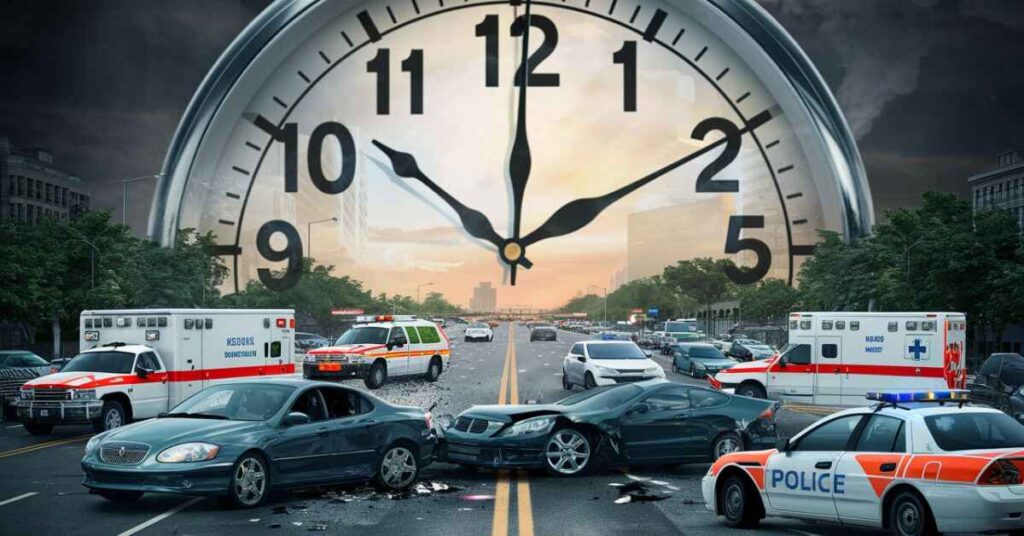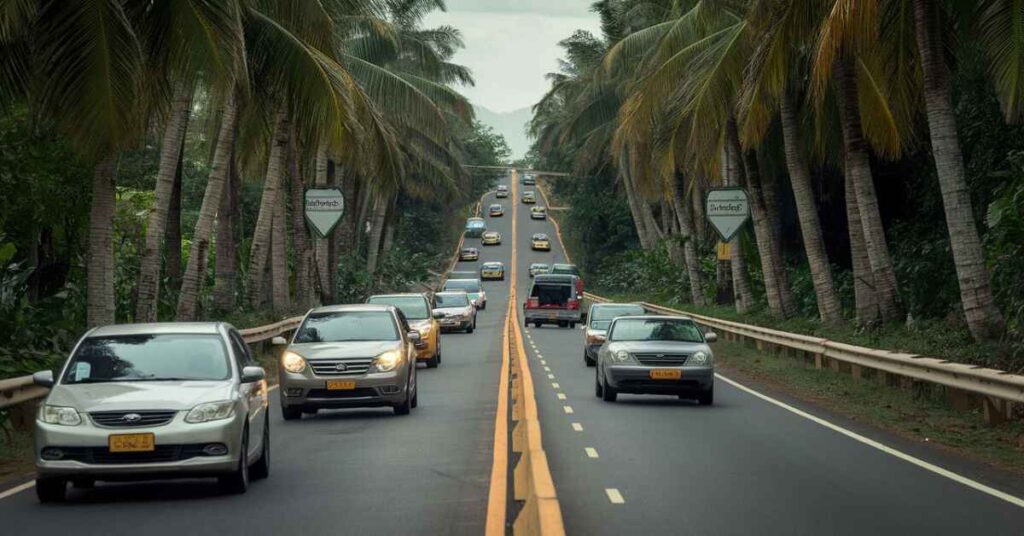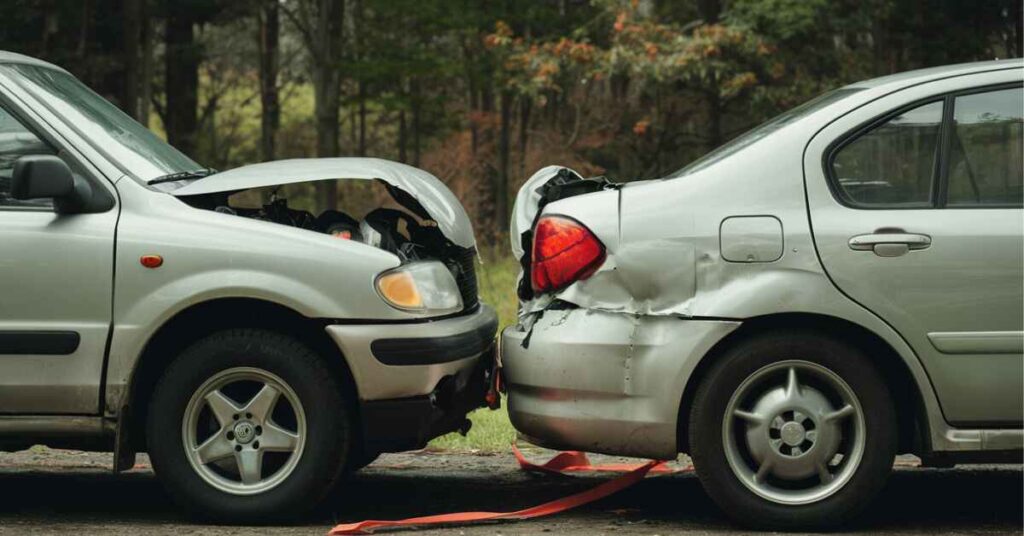In a world where vehicles have become an integral part of our daily lives the sobering reality of car accidents looms large. As we navigate the roads of 2024 it’s crucial to understand the statistics that shape our driving landscape.
This comprehensive look at car accident statistics will open your eyes to the risks we face every time we get behind the wheel whether you’re cruising down American highways weaving through Sri Lankan streets or zipping past motorbikes in Vietnam.
Global Perspective: Shocking Numbers That’ll Make You Buckle Up
Worldwide Crash Data
The global picture of car accidents is nothing short of staggering. According to the World Health Organization approximately 1.3 million people die each year due to road traffic crashes. That’s about 3,700 lives lost every single day. But here’s where it gets even more alarming: low- and middle-income countries account for a whopping 93% of these fatalities, despite having only about 60% of the world’s vehicles.
- For every 100,000 people, there are 18.2 road traffic deaths globally.
- Road traffic injuries are the leading cause of death for children and young adults aged 5-29 years.
- The risk of dying in a road traffic crash is more than three times higher in low-income countries than in high-income countries.
These numbers aren’t just statistics they’re a call to action. They highlight the urgent need for improved road safety measures especially in developing nations where infrastructure and safety regulations may lag behind.
Economic Impact of Road Accidents

The toll of car accidents isn’t just measured in lives lost; it’s also reflected in economic costs that ripple through societies worldwide. Globally, road traffic crashes cost most countries 3% of their gross domestic product. To put this in perspective:
- In the United States the economic cost of motor vehicle crashes in 2019 was estimated at $340 billion.
- In Sri Lanka, the annual economic loss due to road accidents is approximately 1.5% of the GDP.
- Vietnam faces an economic loss of about 2.9% of its GDP due to road accidents.
These figures include direct costs like medical expenses and property damage, as well as indirect costs such as lost productivity. The economic burden of car accidents disproportionately affects lower-income countries, hampering their development and straining already limited resources.
Read this Blog: car in a wash
USA: A Closer Look at the Land of Highways
Trends in U.S. Car Accidents for 2024
The United States, with its vast network of highways and car-centric culture, presents a unique set of challenges when it comes to road safety. In 2024, we’re seeing some troubling trends:
- Fatality rates have increased by approximately 7% compared to pre-pandemic levels.
- Speeding-related deaths have jumped by 11% since 2019.
- Alcohol-involved crashes remain a significant issue, accounting for about 30% of all traffic fatalities.
However it’s not all bad news. Some states have made significant strides in improving road safety. For instance:
- Rhode Island has seen a 25% decrease in traffic fatalities over the past five years.
- Minnesota has implemented successful distracted driving campaigns, reducing phone-related crashes by 17%.
Most Dangerous States for Driving in 2024:
- Mississippi (22.2 deaths per 100,000 population)
- South Carolina (20.7 deaths per 100,000 population)
- Arkansas (19.9 deaths per 100,000 population)
On the flip side the safest states for driving are:
- Massachusetts (5.1 deaths per 100,000 population)
- New York (5.3 deaths per 100,000 population)
- New Jersey (6.1 deaths per 100,000 population)
These disparities highlight the impact that state-level policies and infrastructure investment can have on road safety outcomes.
The Hidden Costs of American Car Crashes
While the loss of life is the most tragic consequence of car accidents, the financial toll is also significant. In 2024, the average cost of a car accident in the U.S. breaks down as follows:
| Type of Cost | Amount |
| Medical Expenses | $17,400 |
| Property Damage | $4,700 |
| Lost Wages | $30,000 |
| Legal Fees | $10,000 |
| Total Average Cost | $62,100 |
These figures don’t account for long-term costs like ongoing medical treatment or reduced quality of life. For severe accidents involving permanent disabilities, lifetime costs can easily exceed $1 million.
Sri Lanka’s Roads: Paradise Island’s Traffic Troubles

Sri Lankan Accident Statistics
Sri Lanka, known for its stunning landscapes and rich culture, faces significant challenges when it comes to road safety. In 2024, the country is grappling with:
- A road accident fatality rate of 14.9 per 100,000 population, higher than the global average.
- An increase in motorcycle-related deaths, accounting for 40% of all road fatalities.
- A stark urban-rural divide, with 65% of accidents occurring in urban areas despite only 18% of the population living in cities.
Compared to previous years Sri Lanka has seen a modest 5% reduction in overall road fatalities. However this improvement is overshadowed by the rise in motorcycle accidents, a trend attributed to the increasing popularity of two-wheelers for navigating congested urban areas.
Initiatives to Curb Road Fatalities in Sri Lanka
The Sri Lankan government recognizing the urgent need for action has implemented several programs aimed at improving road safety:
- Vision Zero Sri Lanka: Launched in 2023, this ambitious program aims to eliminate all road traffic fatalities by 2050.
- Smart Licensing System: A new digital licensing system that includes stricter testing and monitoring of driver behavior.
- Road Infrastructure Improvement: A $500 million project to upgrade rural roads and implement safety features like guardrails and improved signage.
NGOs are also playing a crucial role. The Road Safety Fund, a local non-profit, has launched a successful awareness campaign targeting young drivers, which has reached over 500,000 people through social media and community events.
Vietnam: Navigating the Bustling Streets
Motorcycle Nation: Vietnam’s Unique Challenges
Vietnam’s roads present a unique spectacle, with motorcycles accounting for about 95% of registered vehicles. This two-wheeled dominance creates distinct safety challenges:
- Motorcycle accidents make up 70% of all road fatalities in Vietnam.
- The risk of death for motorcycle riders is 20 times higher than for car occupants.
- Urban areas like Ho Chi Minh City and Hanoi see an average of 20 traffic accidents per day.
Interestingly car-related accidents, while fewer in number tend to be more severe due to the speed and weight of the vehicles involved. In 2024, car accidents account for 25% of road fatalities despite cars making up only 5% of registered vehicles.
Vietnam’s Road to Improvement
Vietnam has made significant strides in recent years to address its road safety issues:
- Implementation of stricter drunk driving laws in 2020 has led to a 30% reduction in alcohol-related accidents.
- A nationwide helmet law for motorcycle riders has achieved 95% compliance and reduced head injuries by 40%.
- The “5 No, 3 Yes” campaign (No drinking, No speeding, No running red lights, No driving in wrong lanes, No overtaking in dangerous areas; Yes to helmets, Yes to seatbelts, Yes to politeness) has raised awareness and changed behaviors.
These efforts have started to pay off, with Vietnam seeing a 10% reduction in road fatalities over the past three years.
Common Causes of Car Accidents Across Borders

The Big Three: Speed, Alcohol, and Distraction
Regardless of country or culture, three factors consistently top the list of accident causes:
- Speeding
- Accounts for 26% of all traffic fatalities globally
- Increases the likelihood of a crash by 12% for every 5 mph over the speed limit
- In the U.S., speeding killed 11,258 people in 2020
- Alcohol
- Responsible for 30% of fatal crashes in the U.S.
- In Sri Lanka, 20% of road fatalities involve drunk driving
- Vietnam saw a 30% reduction in alcohol-related accidents after implementing stricter laws
- Distraction
- Texting while driving increases the risk of a crash by 23 times
- In the U.S., distracted driving claimed 3,142 lives in 2020
- A survey in Sri Lanka found that 68% of drivers admit to using their phones while driving
Environmental Factors
While human behavior is the primary cause of accidents, environmental factors play a significant role:
- Weather-related crashes account for 21% of all vehicle crashes in the U.S.
- In Sri Lanka, 35% of accidents occur during the monsoon season
- Poor road conditions contribute to 12% of accidents in Vietnam
Who’s Most at Risk? Age and Gender in Accident Statistics
Young Drivers: The High-Risk Group
Across all three countries, young drivers consistently emerge as the highest-risk group:
- In the U.S., drivers aged 16-19 are nearly three times more likely to be in a fatal crash than drivers 20 and older.
- In Sri Lanka, 40% of road accident victims are between 20-35 years old.
- Vietnam sees a similar trend, with 70% of motorcycle accident victims under the age of 30.
To address this issue, countries have implemented various novice driver programs:
- The U.S. has seen success with Graduated Driver Licensing (GDL) programs, reducing teen crash rates by up to 40% in some states.
- Sri Lanka introduced a probationary license system in 2022, requiring new drivers to display a “P” plate for the first year.
- Vietnam has implemented mandatory safety courses for new motorcycle license applicants.
Gender Disparities in Car Accidents
Interestingly gender plays a significant role in accident statistics:
- In the U.S., men are involved in 6.1 million accidents annually, compared to 4.4 million for women.
- Sri Lankan data shows that 87% of road fatalities are male.
- In Vietnam, men account for 79% of road accident victims.
Several factors contribute to this disparity:
- Men tend to drive more miles than women.
- Men are more likely to engage in risky behaviors like speeding and drunk driving.
- Men are overrepresented in professions that involve more driving, such as truck drivers and taxi operators.
Technology’s Role in Reducing Car Accidents

Advanced Driver Assistance Systems (ADAS)
ADAS technologies are playing an increasingly important role in preventing accidents:
- Automatic Emergency Braking (AEB) can reduce rear-end crashes by 50%
- Lane Departure Warning systems cut head-on and sideswipe crashes by 11%
- Blind Spot Detection reduces lane-change crashes by 14%
Adoption rates vary significantly between countries:
- In the U.S., 92% of new vehicles come with at least one ADAS feature
- Sri Lanka has mandated AEB for all new cars starting in 2025
- Vietnam is still in the early stages of ADAS adoption, with only 15% of new cars equipped with these features
The Promise of Self-Driving Cars
While fully autonomous vehicles are not yet a reality, the potential impact on accident rates is promising:
- Studies suggest that self-driving cars could reduce accidents by up to 90%
- Human error accounts for 94% of crashes, which could be largely eliminated by autonomous systems
- Ethical dilemmas in programming decision-making for unavoidable accidents
- Cybersecurity concerns and the potential for hacking
- The need for updated infrastructure to support autonomous vehicles
What These Car Accident Statistics Mean for You
Personal Safety Tips
Armed with these statistics here are some actionable steps you can take to stay safe on the road:
- Always wear a seatbelt (or helmet for motorcyclists)
- Never drive under the influence of alcohol or drugs
- Avoid distractions, especially phone use while driving
- Obey speed limits and adjust for weather conditions
- Maintain a safe following distance
- Use turn signals and check blind spots before changing lanes
- Stay alert and anticipate other drivers’ actions
Choosing a Safer Vehicle
- Automatic Emergency Braking
- Lane Departure Warning
- Blind Spot Detection
- Adaptive Cruise Control
- Rearview Cameras
Conclusion
The car accident statistics for 2024 paint a sobering picture of the risks we face on the roads, whether in the United States, Sri Lanka, or Vietnam. But they also highlight the progress being made through improved technology stricter laws and increased awareness.
Remember, behind every statistic is a real person someone’s family member, friend or colleague. By understanding these numbers and taking proactive steps to drive safely we can all contribute to reducing accidents and saving lives.
As we move forward, let’s commit to being more conscious drivers, advocating for safer roads, and embracing technologies that can protect us. Together we can turn these statistics around and create a future where road fatalities are a thing of the past.











